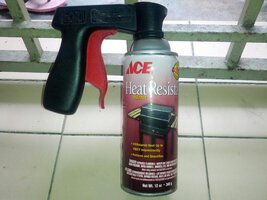the basic exs pipe that i know, more heat make that gases be more lighter and the lighter gases can create speed flow that can help draw gas from one exs stroke to other exs stroke..(same concept speed when we use hose pipe to draw water from drum) ....for wraping is one of solution (ceramic coat is the best la) that we do to keep that exs pipe keep heat inside and also help to reduce underbonnet temp that we know more good to engine...for wraping exs piping (stainless steel)..also can reduce sound and for my opinion la..i always deal with S.stell weld..its fast to hot but also fast to cold if blow with air...so under car pipe my be will become cool when high speed...but dont know never try to touch it when drive...ha..ha..ha.

